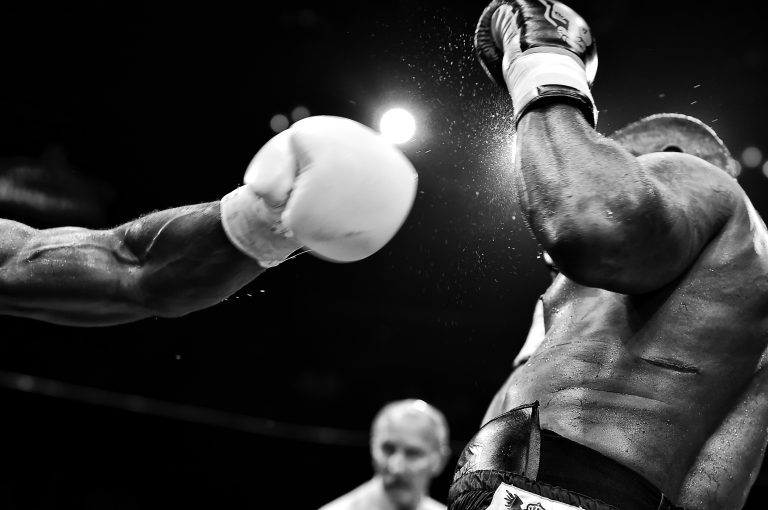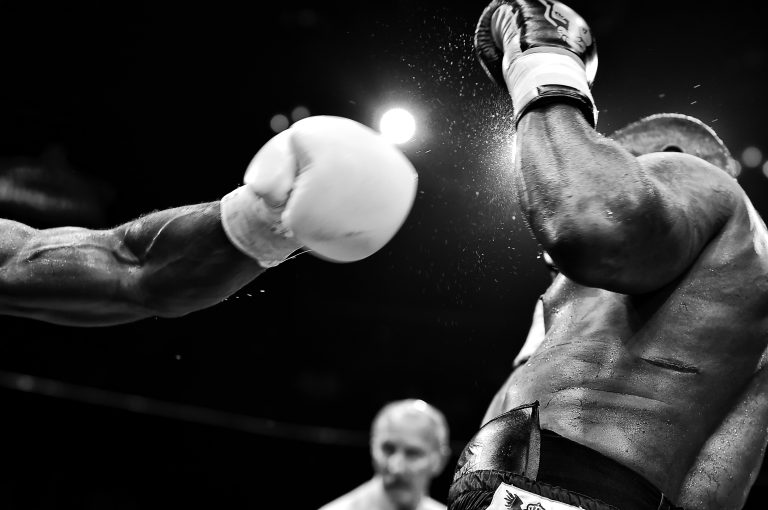Karate-Do Meaning in English
Karate-Do, often simply referred to as Karate, is a Japanese martial art that has gained worldwide recognition for its unique blend of athleticism, discipline, and philosophy. The term ‚Karate-Do‘ is derived from three Japanese characters which represent ‚empty‘, ‚hand‘, and ‚way‘. In English, it translates to ‚the way of the empty hand‘.
The Origins of Karate-Do
Karate has a rich and complex history that can be traced back to the Ryukyu Kingdom in Okinawa, Japan, where it was developed as a form of self-defense by the local inhabitants. Early forms of Karate-Do were largely influenced by Chinese martial arts, which were introduced to Okinawa through trade and cultural exchange. Over the years, the art form evolved and was refined, becoming increasingly popular amongst the Okinawan people.
The Philosophy of Karate-Do
Karate-Do is not just a form of self-defense or a sport; it is a way of life that encompasses a set of philosophical principles and values. At its core, Karate-Do emphasizes the development of the individual as a whole, focusing on the physical, mental, and spiritual aspects of one’s being. The philosophy of Karate-Do is influenced by Zen Buddhism, Confucianism, and Taoism, among other Eastern philosophies.
One of the key principles of Karate-Do is the concept of ‚karate ni sente nashi‘, which translates to ‚there is no first attack in karate‘. This reflects the belief that Karate-Do should only be used as a form of self-defense and never for aggressive or offensive purposes. Other important principles of Karate-Do include humility, respect for oneself and others, perseverance, and self-control.
The Practice of Karate-Do
Karate-Do is practiced in a dojo or training hall, under the guidance of a qualified instructor, or sensei. Training typically consists of a combination of physical exercises, including stretching, cardiovascular conditioning, and strength training, as well as the practice of various techniques and forms, or kata.
Kata is a series of prearranged movements that simulate a fight against multiple imaginary attackers. Practicing kata helps students to develop proper technique, timing, and focus, and is an important part of traditional Karate-Do training. In addition to kata, students also practice kumite, or sparring, which involves the application of techniques against a live opponent.
The Benefits of Karate-Do
Karate-Do offers a wide range of physical and mental benefits for practitioners of all ages and abilities. From a physical standpoint, Karate-Do can improve one’s balance, coordination, strength, and flexibility, as well as providing cardiovascular benefits.
Mentally, Karate-Do can help to reduce stress, increase focus and concentration, and improve self-confidence and self-esteem. The discipline and structure of Karate-Do training can also help to instill important values such as perseverance, respect, and humility.
In
What is the meaning of Karate-Do?
Karate-Do is a Japanese martial art that has been practiced for centuries. The word ‚karate‘ is derived from two Japanese words: ‚kara‘ meaning ‚empty‘ and ‚te‘ meaning ‚hand‘. When combined, the word ‚karate‘ translates to ‚empty hand‘, which refers to the fact that karate-do is a martial art that primarily uses the hands and legs as weapons, rather than relying on weapons like swords or guns.
The suffix ‚do‘ in ‚karate-do‘ means ‚the way‘ or ‚the path‘, which is why karate is often referred to as the ‚way of the empty hand‘. This refers to the fact that karate-do is more than just a fighting style – it is a way of life that emphasizes physical and mental discipline, respect for one’s self and others, and self-improvement through training and personal development.
What are the origins of Karate-Do?
Karate-Do has its roots in Okinawa, a small island located in the southern part of Japan. Okinawa was once an independent kingdom and was heavily influenced by Chinese culture, including Chinese martial arts. The people of Okinawa developed their own unique martial art that combined elements of Chinese martial arts with their own indigenous fighting styles. This martial art became known as ‚Okinawa-Te‘.
In the early 20th century, Okinawa-Te was introduced to mainland Japan, where it was further developed and refined into what we now know as Karate-Do. Today, Karate-Do is practiced all over the world and has become one of the most popular martial arts in the world.
What are the main principles of Karate-Do?
There are several principles that are central to the practice of Karate-Do:
- Budo: Karate-Do is a martial art, which means that its ultimate goal is the development of self-defense skills.
- Kata: Kata is a series of pre-arranged movements that are designed to simulate a real fight. Practicing kata is an important part of karate training, as it helps to develop technique, balance, and timing.
- Kumite: Kumite is the sparring aspect of karate training, where students practice their techniques against a partner in a controlled setting.
- Etiquette: Respect for one’s self and others is a key part of Karate-Do. This includes bowing to the instructor and opponents, and showing humility and courtesy both inside and outside the dojo.
- Ki: Ki is the life force that exists in all living things. In Karate-Do, students learn to develop their ki and use it to enhance their technique and power.
What are the benefits of practicing Karate-Do?
Practicing Karate-Do can have a range of physical and mental benefits. Some of the most common benefits include:
- Improved fitness: Karate-Do is a full-body workout that can help to improve strength, flexibility, and cardiovascular health.
- Self-defense skills: Karate-Do teaches students a range of self-defense techniques that can be used in real-life situations.
- Discipline: Karate-Do requires a lot of discipline and dedication, which can help to improve self-control and focus.
- Confidence: As students progress through the ranks in Karate-Do, they can gain a sense of achievement and confidence in their abilities.
- Mental clarity: Practicing Karate-Do can help to clear the mind and reduce stress, making it a great way to improve mental health.
How to Understand Karate-Do Meaning in English
Karate-do is a martial art that originated in Okinawa, Japan, and has spread to many countries worldwide. It is a discipline that develops physical fitness, mental strength, and self-defense skills. The term „karate-do“ consists of three Japanese characters: kara, te, and do. In this post, we will explain what these characters mean and how they relate to the practice of karate.
Step 1: Understanding The Meaning Of Kara
The first character in karate-do is „kara,“ which means „empty.“ In the context of karate, it refers to the emptiness of the practitioner’s mind: a clear, tranquil state of being. This is achieved through meditation, deep breathing, and concentration techniques. Kara does not mean „void“ or „nothingness“; rather, it signifies the absence of chaotic or distracting thoughts. A karateka (a practitioner of karate) strives to maintain a state of mental calmness and concentration during training and sparring.
Step 2: Understanding The Meaning Of Te
The second character in karate-do is „te,“ which means „hand.“ However, it does not refer only to the physical hand, but to the whole body. In karate-do, the body is the primary weapon used to strike, block, and defend. Te also represents the development of physical strength, agility, and coordination through rigorous training. A karateka trains their body to be flexible, fast, and adaptive, enabling them to react to an opponent’s moves quickly.
Step 3: Understanding The Meaning Of Do
The third character in karate-do is „do,“ which means „the way“ or „the path.“ It refers to the spiritual and philosophical aspects of karate, which are as important as the physical training. Do emphasizes the pursuit of enlightenment and personal growth through the practice of karate. A karateka understands that the journey of self-improvement is just as important as the end goal of mastering the martial art.
Step 4: Putting it Together: The Full Meaning of Karate-Do
Taken together, kara, te, and do represent the philosophy and practice of karate-do. Karate-do is not simply a physical exercise but a way of life that promotes self-discipline, mental focus, physical fitness, and personal growth. The „empty hand way“ emphasizes the importance of an empty mind, the development of the body as a weapon, and the pursuit of enlightenment on the martial arts path.
Conclusion
In conclusion, karate-do is a martial art that emphasizes the holistic development of the practitioner: mind, body, and spirit. It is not simply a way of fighting but a way of life that promotes physical and mental fitness, self-defense skills, and personal growth. Understanding the meaning of kara, te, and do are essential for comprehending the philosophy and practice of karate-do. We hope this guide has helped you understand the deeper meaning of karate-do and appreciate the discipline as more than just a form of martial arts.
Inhaltsverzeichnis






